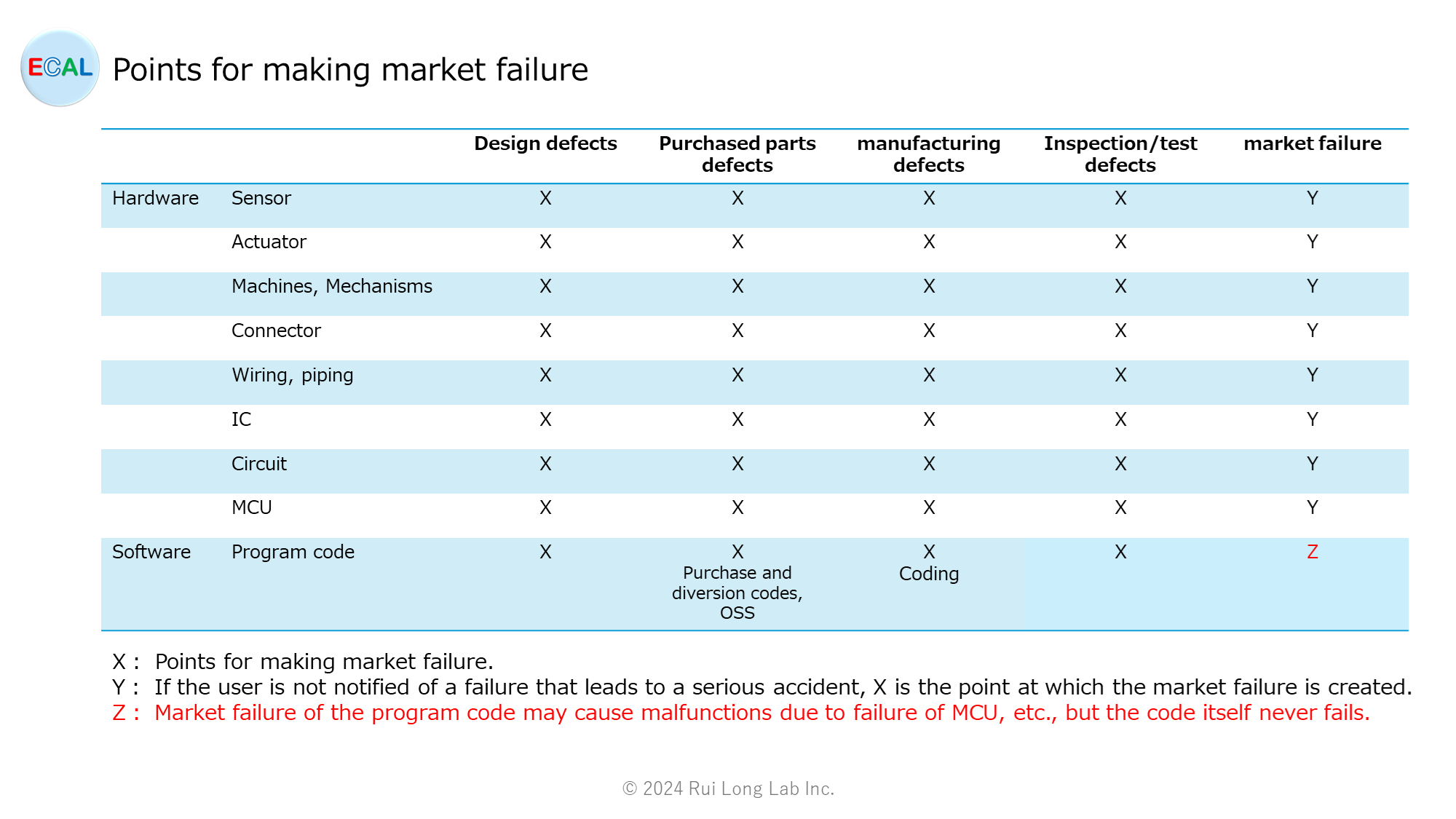This post describes the points for making market failures in embedded products.
The table below shows the key points for creating market failures for embedded products. What I want everyone to know here is that the code of the program does not break down in the market. The program code will have the same Output for the same Input unless the hardware fails or is otherwise affected. For example, circuits fail, but schematics do not. It is the same thinking.
X: Points for making market failure.
Y: If the user is not notified of a failure that leads to a serious accident, X is the point at which the market failure is created.
Z: Market failure of the program code may cause malfunctions due to failure of MCU, etc., but the code itself never fails.
| Design defects | Purchased parts defects | manufacturing defects | Inspection/test defects | market failure | ||
| Hardware | Sensor | X | X | X | X | Y |
| Actuator | X | X | X | X | Y | |
| Machines, Mechanisms | X | X | X | X | Y | |
| Connector | X | X | X | X | Y | |
| Wiring, piping | X | X | X | X | Y | |
| IC | X | X | X | X | Y | |
| Circuit | X | X | X | X | Y | |
| MCU | X | X | X | X | Y | |
| Software | Program code | X | X Purchase and diversion codes, OSS | X Coding | X | Z |

